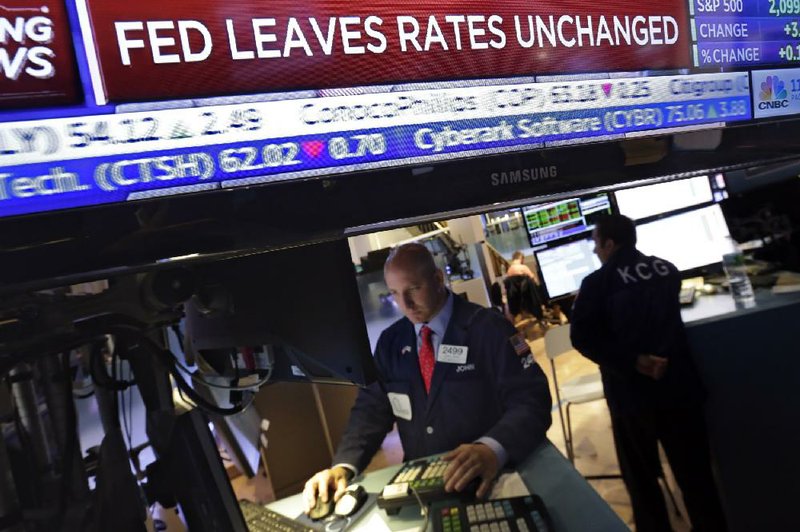WASHINGTON -- The Federal Reserve on Wednesday signaled that the U.S. economy is nearly ready to stand on its own despite a rocky start to the year.
Officials at the nation's central bank voted unanimously to leave the benchmark federal funds rate unchanged at zero during their regular policy meeting in Washington. But their own economic forecasts show most believe they will raise it for the first time in nearly a decade sometime this year, according to documents released Wednesday.
The federal funds rate influences the cost of borrowing for everything from buying a new home to building a new factory. Since 2008, it has been at virtually zero in the hopes that easy money would stimulate demand among consumers and businesses and bolster the recovery. Raising the rate would amount to a vote of confidence in the country's economic health.
"Economic activity has been expanding moderately after having changed little during the first quarter," the central bank said in an official policy statement. The Fed also pointed out that the economy is creating jobs at a faster clip, the housing sector is improving, and consumers are spending moderately more money.
The central bank acknowledged that businesses have been wary of investing and exports are weak. But it noted that the fall in energy prices, which weighed on inflation, have stabilized.
The Fed's cautious optimism comes despite downgraded forecasts for the economy this year. The central bank lowered its forecast for growth to just between 1.8 percent and 2 percent, below its spring projection of 2.3 percent to 2.7 percent. Meanwhile, it raised the forecast for the unemployment rate to between 5.2 percent and 5.3 percent from between 5 percent and 5.2 percent in the spring. Estimates of inflation held steady at 0.6 percent to 0.8 percent.
The revised numbers reflect the stumble in the recovery during the first quarter, which central bank officials largely have written off as transitory. Their projections for growth, employment and inflation next year were virtually unchanged.
Officials' expectations for the fed funds rate this year also drifted lower. In the spring, forecasts ranged up to nearly 2 percent by year's end. Wednesday's data showed officials nearly evenly divided between just under 1 percent and slightly above 0.25 percent -- likely reflecting debate over the exact timing of liftoff.
But the median estimate for the fed funds rate remained unchanged at 0.625 percent, implying two increases this year. Two officials believed the Fed should not move at all until 2016.
Most economists believe the Fed will move when it meets in September, although markets show the most likely month as December, according to prices on fed funds futures before Wednesday's announcement.
The Fed has cautioned that the timing of its decision to increase interest rates will depend on how the recovery unfolds. If economic data come in better than expected, the central bank may move more quickly and aggressively. If the recovery is weak, it can delay or slow down the process.
The Fed also believes that the precise timing of the first increase matters mainly to Wall Street and makes little difference in the broader economy. Inside the central bank, the debate has shifted to the pace of subsequent rate increases. The median estimate for the target rate at the end of 2016 is lower than in the spring, suggesting a shallower path of increases.
"The various headwinds that are still restraining the economy ... will likely take some time to fully abate, and the pace of that improvement is highly uncertain," Fed Chairman Janet Yellen said in a speech last month. "If conditions develop as my colleagues and I expect, then the [Fed's] objectives of maximum employment and price stability would best be achieved by proceeding cautiously, which I expect would mean that it will be several years before the federal funds rate would be back to its normal, longer-run level."
But the Fed has cautioned that markets should not expect a smooth ride back to normal. Officials have been walking a fine line between assuring investors that the process will likely be slow and well telegraphed while preparing them for a potentially bumpy transition.
"We have no intention of embarking on a preset course of increases in the federal funds rate after the initial increase," Yellen said in the May speech. "Rather, we will adjust monetary policy in response to developments in economic activity and inflation as they occur."
In 2013, when the central bank tried to signal that it would soon stop pumping money into the recovery, markets and Main Street suffered. Interest rates spiked, forcing the Fed to move gingerly when it finally began to wind down its purchases of long-term bonds the next year.
Business on 06/18/2015
